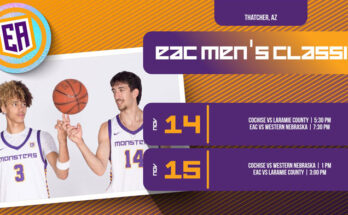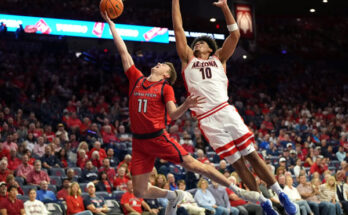From the sportsbook’s point of view, player performance is currency. In 2025, a few Diamondbacks are holding a lot of it. Each hot streak, injury, or standout stat from these players is translating into real adjustments on the board.
To see the effect, you have to look past the standings and focus on the individuals forcing those changes, starting with the names you’re about to read.
1. Ryne Nelson
Since early July, Ryne Nelson’s been a strikeout prop powerhouse. He’s registered back-to-back starts with a season-high eight Ks and, through six July starts, holds a 3.52 ERA as of July 25 (6-2 record). That level of production doesn’t go unnoticed. It’s baked into the way sportsbooks price his starts.
That consistency at the K-plate has fueled Overprop interest. Bettors know a starter who regularly clears five strikeouts will force sportsbooks to adjust totals and prop lines.
Platforms tracking AZ Diamondback odds have reflected these moves all summer, with Nelson’s strikeout props tightening hours before first pitch. His ability to consistently meet expectations has made him a predictable but powerful influence on the board.
2. Ketel Marte
Marte’s in the middle of a real run. As of early August, he’s batting .284 with 21 home runs and an OPS of .926, ranking seventh across MLB in OPS. That level of production has sportsbooks sharpening their eyes and adjusting lines accordingly.
Prop markets have responded. On July 8, he was among the top Home Run Over plays, identified by sharp bettors for clearing the long ball in four of his last eight games, delivering a +184% ROI.
As of August 7, his hits and total bases props are locking in around 1.5 hits and 2 total bases per game, reflecting a sustained and market-moving baseline of production.
Older bettors chase that kind of late-game power. Marte’s homer props pop, boosting action on run lines and total bases. His production is as much about moving lines as it is about scoring runs.
3. Geraldo Perdomo
Perdomo’s 2025 campaign may lack highlight-reel drama, but its efficiency has caught the eye of oddsmakers. His expected wOBA of .344 trails his actual .386, driven by harder contact, a higher barrel rate, and elevated bat speed.
Perdomo’s hard-hit and barrel percentages, 33.8% and 5.2%, respectively, are sharply outperforming his career norms, turning contact quality into credible market pressure.
He’s also scorching right now. Over his last seven games, he’s hitting .385/.484/.577—with multi-hit outputs and consistency that influence betting lines, especially on RISP props and late-inning totals.
Add to that his xwOBA of .353, placing him in the 87th percentile of the league, and you see how his plate performance shapes oddsmaker perception in ways that go beyond the box score. That kind of plate discipline and late-inning reliability shifts in-game betting flows, especially in RISP props and clutch-run totals.
4. Corbin Carroll
Carroll’s leadoff power continues to dictate early-game pricing. On August 7 against the Padres, he launched a 443-foot, 110 mph first-inning homer, immediately boosting action on first-inning and total-base props.
That kind of output isn’t rare for him this summer. In early August, Carroll was responsible for 11.1% of the team’s hits and 13.5% of its total bases, far above typical leadoff production. Oddsmakers have responded by tightening early-game lines whenever he’s penciled in at the top of the order.
His market impact isn’t just tied to power. Snapping a 16-game homer drought with his 23rd blast, he followed up with a multi-hit game that included a steal, reminding bettors and books alike that speed and contact also fuel his value.
Over the past month, he’s slashed .247/.323/.546 with 23 homers and 56 RBIs in 98 games, placing him among the team’s top five in run production. For sportsbooks, that’s enough to factor volatility into pricing before the first pitch.
5. Kyle Nelson
Roster turbulence has pushed Kyle Nelson back into a meaningful role. After a mid-July DFA, his contract was reselected on August 1, bringing him back to the big-league bullpen.
In 11 appearances this season, he’s posted a 4.22 ERA, 1.13 WHIP, and an 8:4 K: BB over 10.2 innings, numbers that become relevant in tight late-game situations.
The timing matters. Arizona’s bullpen owns a 4.93 ERA and 1.44 WHIP, ranking near the bottom of the league. That level of instability forces oddsmakers to adjust run lines and totals when bullpen usage is projected to be heavy.
For bettors monitoring how bullpen metrics influence pricing, FanDuel’s Guide to MLB Stats provides a clear view of league-wide trends and how arms like Nelson factor into market movement. His presence or absence changes the calculus for books managing late-inning risk.
From Stats to Stakes
It’s one thing to fill a box score. It’s another to set a price. In 2025, the players shaping Arizona’s betting lines are doing both. They’re the ones turning a single at-bat, inning, or defensive stand into an immediate market reaction. More than just about fandom, tracking them closely is about understanding the chain reaction from play to payout.










